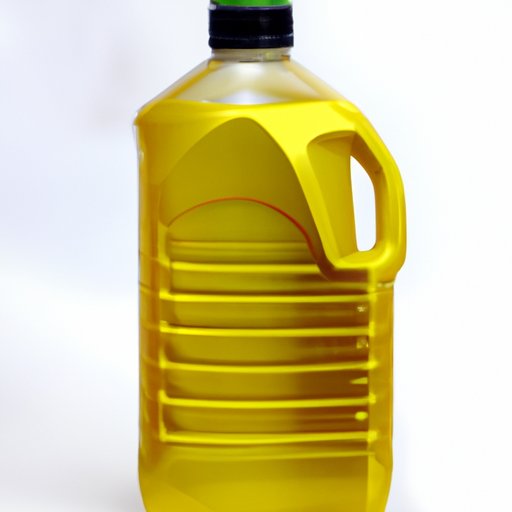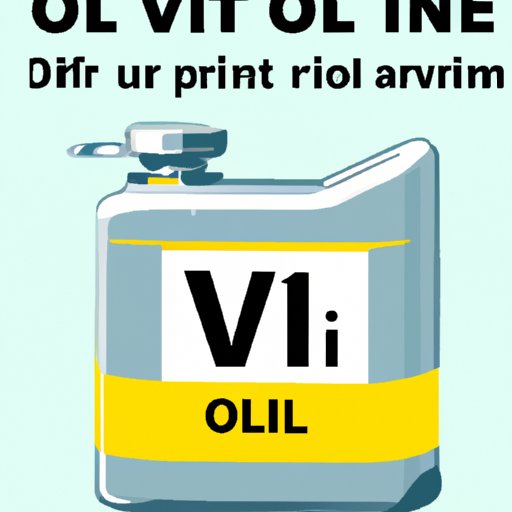
I. Introduction
Do you ever feel overwhelmed by all the different numbers and letters on oil containers? Understanding oil weight and reading oil container labels is crucial for vehicle owners. In this guide, we will break down the basics of oil weight and explain how to read and interpret oil weight ratings.
II. The Beginner’s Guide to Understanding Oil Weight
Oil weight refers to the thickness or viscosity of the oil. This is important because vehicle engines need oil with the proper viscosity to lubricate and protect the engine’s moving parts. When oil is too thin or too thick, engine damage can occur.
There are two primary types of oil weight: multigrade and monograde. Multigrade oil has a range of viscosities that provide better engine protection in a variety of temperatures. Monograde oils have a consistent viscosity throughout, but may not provide adequate protection in extreme temperatures.
III. Why Knowing Your Oil Weight Is Important for Your Vehicle
Using the wrong oil weight can result in negative consequences for your vehicle’s performance, lifespan, and warranty. For example, using an oil weight that is too thin in high temperatures can lead to engine wear and tear. Consult your vehicle owner’s manual to identify the recommended oil weight for your vehicle’s make and model.
Using the right oil weight can improve your vehicle’s performance and lifespan. It can also help you avoid costly repairs and replacements down the road.

IV. How to Read the Numbers on Your Oil Container
Reading oil container labels may seem daunting, but it’s actually quite simple. Look for a label that says “SAE” (Society of Automotive Engineers) followed by two numbers. The first number indicates the viscosity of the oil at low temperatures and the second number indicates the viscosity of the oil at high temperatures. For example, SAE 5W-30 oil is thinner at low temperatures (5 weight) and thicker at high temperatures (30 weight).
Some oil containers may also use the terms “winter weight” and “summer weight” to indicate viscosity at different temperatures. Others may use a viscosity index (VI) number to indicate how well the oil maintains its viscosity in a range of temperatures.
V. The Science Behind Oil Weight and Viscosity
Viscosity refers to the resistance of a fluid to flow. In other words, it indicates how thick or thin the fluid is. Oil weight and viscosity are closely related. Thicker oil has a higher viscosity, while thinner oil has a lower viscosity.
Temperature also affects oil weight and viscosity. When oil is heated, it becomes thinner and less viscous. When oil is cooled, it becomes thicker and more viscous. Multigrade oils use additives that make them more resistant to changes in viscosity due to temperature fluctuations.
VI. Pro Tips for Interpreting Oil Weight Ratings
Oil weight ratings can vary between manufacturers, so it’s important to consult your vehicle owner’s manual for the recommended oil weight. If you’re unsure which oil weight to use, consult a trusted mechanic or the manufacturer’s customer service hotline.
Factors such as engine age, driving conditions, and climate can also influence the recommended oil weight. For example, if you frequently drive in extreme temperatures, a higher viscosity oil may be recommended.
VII. The Differences Between Multigrade and Monograde Oils
There are important differences between multigrade and monograde oils. Monograde oils have a consistent viscosity throughout, but may not provide adequate protection in extreme temperatures. Multigrade oils have a range of viscosities that provide better engine protection in a variety of temperatures.
Generally, multigrade oils are recommended for most vehicles because they provide better protection in a wider range of temperatures.
VIII. Common Mistakes to Avoid When Decoding Oil Weight
One common mistake is relying solely on the oil weight number to determine the appropriate oil for your vehicle. It’s important to also consider the climate and driving conditions you typically encounter.
Another mistake is assuming that all oils of the same weight are created equal. Ratings can vary between manufacturers, so be sure to consult the manual or a trusted mechanic for the appropriate oil weight for your vehicle.
IX. Conclusion
Understanding oil weight and reading oil container labels is essential for vehicle owners. By using the right oil weight, you can improve your vehicle’s performance and lifespan. Remember to consult your vehicle owner’s manual for the recommended oil weight and consider factors such as climate and driving conditions. Armed with this information, you’ll be able to confidently choose the right oil weight for your vehicle and avoid costly engine damage down the road.




